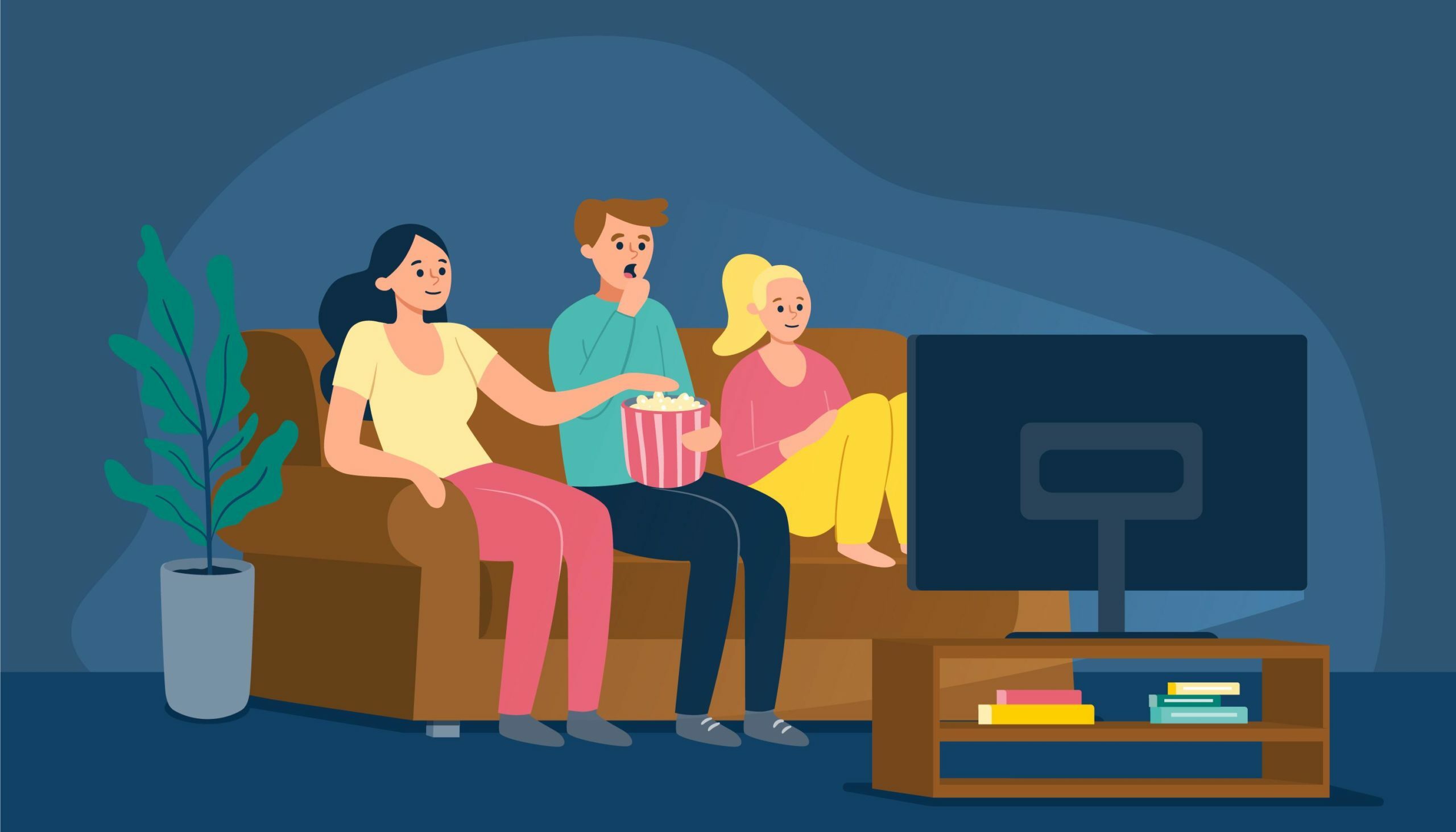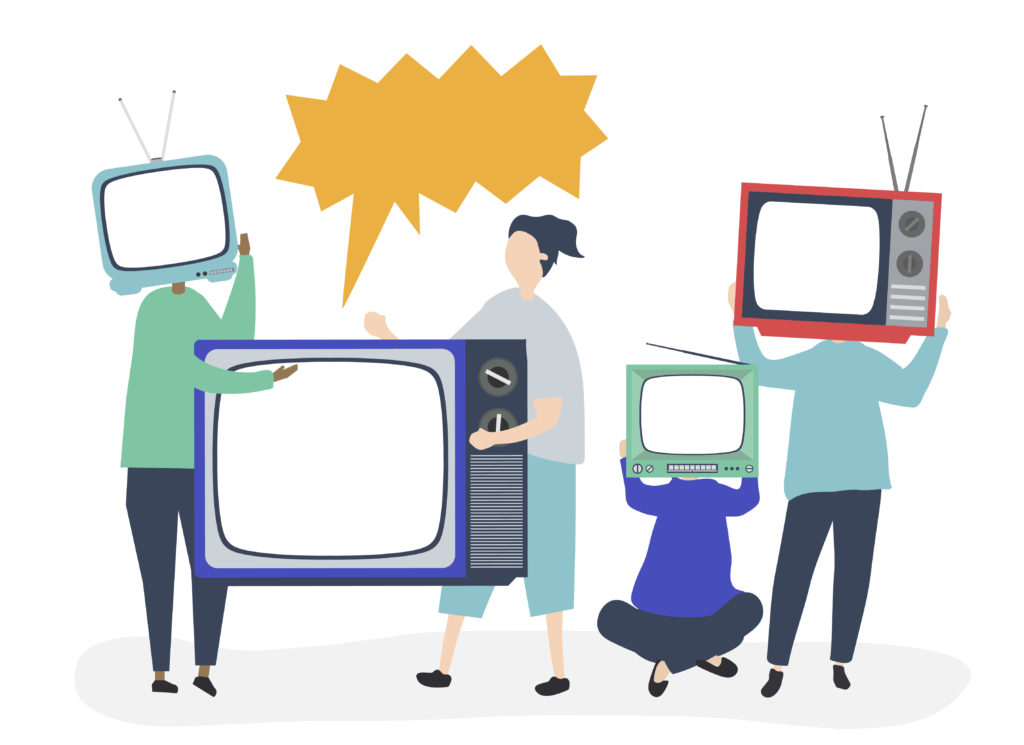M+E Connections

Time to Think About the Content Consuming Public
Story Highlights
Aristotle was right back around 343 BC (give or take a few years) when he advanced the postulate that nature abhors a vacuum.
Seems like only yesterday we were complaining about our cable TV bundle that we were paying $150-plus just knowing we were being taken to the cleaners because we only watched three to five (?) channels.
Everything else? Total waste.
So, we went through the long, arduous task of ending our contract with them and kept our home fiber and wireless connections to the world. Obviously, we weren’t alone.
Back a few quarters ago 2.2 million folks cut their TV cord, 2.9 percent of all subscribers. They’re like rats abandoning a sinking ship. It didn’t all happen at once. Liechtman reported that at the end of the first quarter this year, 73.7 million U.S. households still subscribe to some form of pay TV.
Incidentally there are a lot of new streaming services that would love to have that many subscribers.
Leading OTT services/subscribers:
• Netflix 231 million
• Amazon Prime Video 200 million subscribers
• Disney+ 138 million
• Tencent Video 124 million
• iQIYI: 106 million subscribers
• Max 86.8 million subscribers
• Hulu 43 million subscribers
• Paramount 32.8 million subscribers
Of course, those aren’t all the services, and the subscriber numbers change day by day, hour by hour.
But Wall Street “experts’” siren call of the billions of dollars, euros, yuan, etc., that can be made convinced more than 200 services around the globe that steaming was like the California gold rush of the 1800s … subscribers were just sitting around waiting for you to sign them up for your anytime, anyplace, any screen service.
And according to Statista the streaming market has done well in recent years and should show modest growth in the years ahead:
• 2018 – streaming market value was $42.4 billion
• 2019 – market was valued at $50.5 billion
• 2020 – market rose to $59.1 billion
• 2021 – valued at $72.2 billion
• 2022 – streaming value was 84.3 billion
• 2023 – it’s projected to reach $90.8 billion
• 2024 – market is forecast to reach $98.8 billion
• 2025 – market will top $106.8 billion
• 2026 – global market is estimated to be worth $115 billion
Your entertainment life has almost turned into a summer break … floating down your stream watching your new, interesting content when you want. It’s only costing you $6-$15 for your service plus your $50 home fiber connection.
 Of course, you need that anyway to stay in touch with the office, partners, friends, whatever so it’s a standard part of your household budget … not your entertainment budget.
Of course, you need that anyway to stay in touch with the office, partners, friends, whatever so it’s a standard part of your household budget … not your entertainment budget.
You’re really happy with your core video services Netflix, Prime but depending on your viewing tastes/habits you’ve burned through all of the series and/or new movies they offer (binged) or your friend, neighbor or social media connection tells you about the new stuff on one of the other services- Disney+, Max, Paramount+, BritBox, Canal+, etc. and you have to add their service to your entertainment lists.
No problem, it’s “only” $10 here, $10 there and as WBD’s David Zaslav said his organization’s content is more valuable than everyone else’s so you sign up for his $15 package.
Suddenly you’re looking at a major monthly entertainment bill that almost costs as much as the pay TV bundle you left.
Now you’ve got 5-7 entertainment silos that do their darndest to figure out and recommend shows/movies you’d like to watch on their service but don’t have a clue about what might interest you in someone else’s tower.
So, you spend 8-10 minutes popping into and out of each of the services, sifting through all their really special content, trying to find the one project that will really satisfy you right now.
Of course, there’s an answer and the studios know what it is. They’ll go back to “the bundle.”
You know the Disney bundle – Disney +, Hulu, ESPN+. Thousands of shows/movies, original/new releases, live sports and lots more including a nice price increase for all that great content.
No, don’t waste your time. Pick WBD’s fantastic bundle that was previously HBO then HBO Max and finally Max. It’s the one-stop shop for your scripted, unscripted viewing – Warner Bros, Discovery, DC, CNN, Looney Tunes, CW and more yes more with a great price increase.
Why bother with them when there’s Paramount +…. Showtime, Paramount, and OMG a monthly subscription price increase.
Netflix is just a steady flow of new shows/movies from around the globe and their so-so games. They didn’t raise their price really. Nope simply eliminated the starter subscription fee … go big or go home.
Prime is priced about the same as before including your MGM content, a decent flow of new movies/series and free delivery of stuff.
Apple TV+ doesn’t really have a bundle and our daughter doesn’t mind because she’s got the best entertainment, experience ever with Apple One that lets her choose six services – iTunes, apps, books, iCloud, fitness, news and the list goes on – for one “reasonable” subscription fee.
But you still had to jump from application to application and pay the higher fee.
So, control the things you can control … drop a service until they come up with new content, you’re interested in.
That’s one of the real features of streaming services offer. It’s not only easy to sign up, but also easy to cancel … you hardly feel guilty about it. When they have new content you want, drop one of your others and climb back onboard.
Churn hits Netflix and Prime hardest because they already have 20 and 21 percent respectively of all the U.S. streaming subscribers. In addition, Netflix is preferred by 47 percent of all U.S. subscribers.
The preference is so strong that even after they clamped down on password sharing – which “everyone” said would be a disaster – they increased subscriptions by 200,000.
 At their beginnings Netflix, Prime and Apple all targeted the global streaming market. Netflix has about 239 million global subscribers while Amazon has 200 million subscribers around the world.
At their beginnings Netflix, Prime and Apple all targeted the global streaming market. Netflix has about 239 million global subscribers while Amazon has 200 million subscribers around the world.
Admittedly Apple had a slight head start with more than 1.46 billion iPhone, Mac, iPad users around the globe.
Deloitte Global predicted that the global churn rate about 30 percent, 150 million paid subscribers annually.
The company estimates it costs about $200 to acquire a new subscriber so churn is problematic.
To keep subscribers during the “lull” periods, VOD services decided to supplement their incomes with ads.
Turns out that despite how people love to claim that they hate ads, they really like saving money more. The moment subscription services began offering ad-supported options, we made the move, switching Netflix, Prime and Disney+ to ad supported versions.
Then we added FAST services – Pluto and Tubi as regulars with a dash of FreeVee.
Of course, there are things they don’t like according to Morning Consult and other audience analysis services about the ads they must view:
• 4 out of 5 dislike the volume of ads especially when compared to pay TV (15-20 minutes of ads in an hour program)
• 79 percent of U.S. adult viewers are bothered by repetitive ads
• 51 percent are bothered by irrelevant ads
• 64 percent find targeted ads as invasive
• 16 percent prefer “binge” ads
• 12 percent prefer home screen ads
Because the ads are on a streaming service there are resolutions.
Most consumers according to Deloitte say that four-eight minutes of ads are acceptable and the leading streaming services – Netflix, Prime, Disney+, Max agree.
Because they are dealing directly with the subscriber/viewer, streaming services gather a lot of personal and preference information which helps them create new content that will appeal to them and enables their recommendation engines to suggest genre and shows/movies that will be (or should) of interest to them.
The data also enables advertisers to discard the old CPM (cost per 1000 impressions) show/movie ad measurement technique and create ads that appeal to specific customers and/or prospects.
Trust us we don’t miss the constant barrage of “if you’re in an accident” ads or ads about personal ailment medicines which we must Google to find out exactly what they are before we breathe a sigh of relief that we don’t suffer from that.
Suddenly you see ads on your screen that are interesting, educational, and even fun to watch as you take a short break from the comedic, horror, war, historical show/movie.
And there were just enough of the ads that we felt we had “paid” for our discounted service.
We also like the suggestion that executives at The Trade Desk (media buying platform) made to advertisers to have multiple versions of their ads so the same ad can be rotated, and you don’t feel you’re seeing the same thing again and again and …
Much as we hate to admit it, in this area AI will become an important tool for streamers and advertisers.
You’ll get the show/movie offered to you even before you realize that’s what you want to watch, and it will have just the right number and types of ads you actually want to see.
Awesome!
Advertisers will eventually get the idea that the added front-end cost really pays off at the cash register. Streamers will understand that helping them understand the viewer more is good for both of them. Best of all you get the stuff you want to watch, when you want to watch it and, on the screen, you have at hand.
But the biggest challenge with streaming is something consumers can’t fix.
We pay for three AVOD services and have two FAST services. You may have three SVOD services, two AVOD services and one FAST service. Everyone is beginning to suffer from subscription fatigue – modest monthly financial outlay while constantly wasting time wondering which VOD silo has the show/movie you want to watch — and getting more irritated with each passing minute.
 Admit it. The old pay TV bundle with built-in program guide was great and it’s only now you appreciate it. Might be why Fox is stubbornly sticking with the pay TV bundle.
Admit it. The old pay TV bundle with built-in program guide was great and it’s only now you appreciate it. Might be why Fox is stubbornly sticking with the pay TV bundle.
Sure, the cable bundle audience – Insider Intelligence says 50 percent of households — continues to shrink but it’s still 65 million households in the U.S.
But Fox racked up $1.77 billion in Q2 of this year and a profit of $369 million for the same period.
That’s more than most streamers!
The other main pay TV channels – NBC, ABC, CBS – also trimmed costs and turned a decent profit during the same period by cutting back on scripted shows and focusing on game and reality shows.
But it’s time for streamers to put aside perhaps/hopefully some of their pride/bravado and admit joining forces for the common good – of the consumer – is a good idea.
You know instead of a Disney bundle, WBD bundle, Paramount bundle join forces and offer people a super bundle.
One fiber/wireless provider, one “adjusted” subscription fee even if you have to sign up for a year.
All of the services would save money in hardware, service management, accounting and more importantly economically grow their subscriptions and reduce churn.
Gitano Sabonti was right when he said in Two Bits, “Hey, it’s all the difference in the world.”
Sure, save a lot of frustration in our house even though we’d have to relearn how to use the TV remote.
Andy Marken [email protected] is an author of more than 800 articles on management, marketing, communications, industry trends in media and entertainment, consumer electronics, software, and applications.









